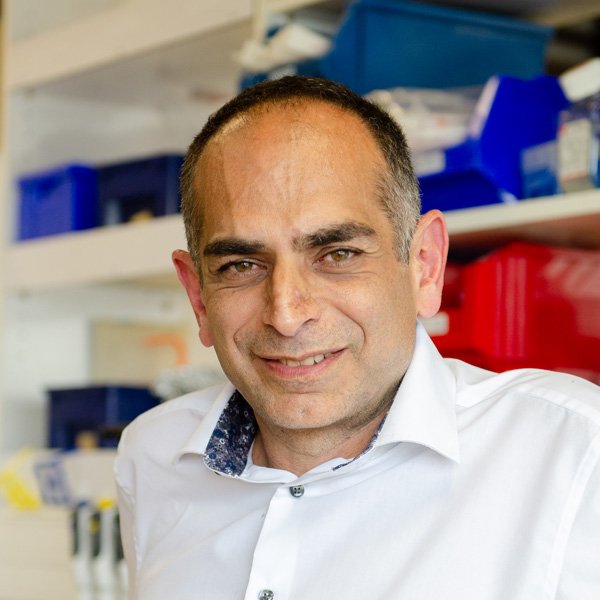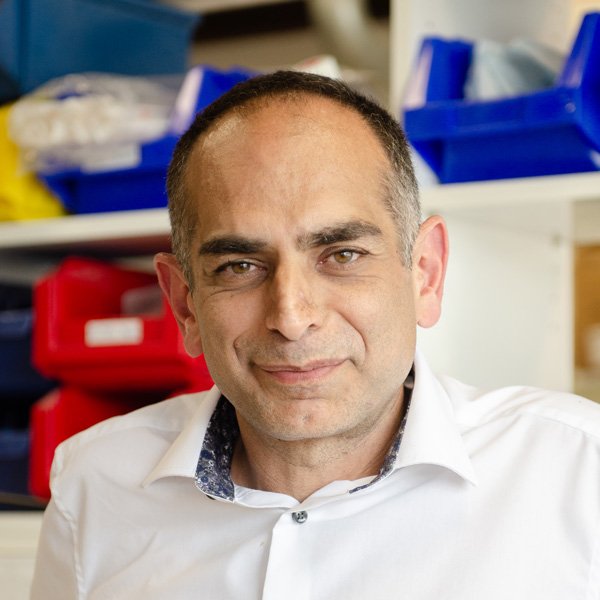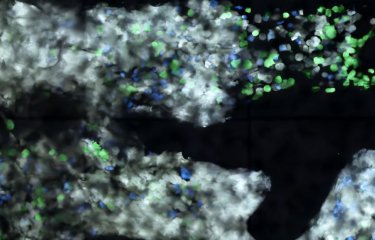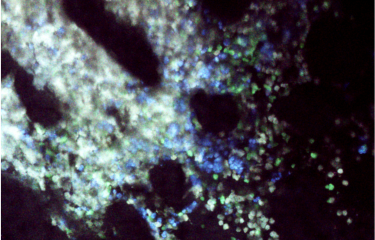Philippe Bousso, an immunologist and technophile with insatiable curiosity, is constantly tackling new challenges in his efforts to combat cancer. Like the characters in the sci-fi film Fantastic Voyage, he and his team use cutting-edge in vivo technologies to observe the ways in which the immune system wages war on cancer cells. For Philippe, creativity and innovation pave the way for new discoveries.
Philippe Bousso was initially interested in science and technology and chose to study at the demanding and highly prestigious École Polytechnique. But once he had finished his studies, which focused in large part on math and physics, he decided to become a biologist. As a scientist, he felt that progress and knowledge had to serve the well-being and health of the people around him.
Embracing technological innovation
After completing a PhD in Immunology at the Institut Pasteur, Philippe headed to the United States for a postdoctoral fellowship. He went to several universities, but it was at Berkeley, California, that he found the focus of his future research. His mission would be to develop new tools to observe the reactions of the immune system in real time.

I regularly took samples to Stanford University, which wasn't far away, because they had very powerful microscopes. I was lucky enough to play my part in a scientific revolution! We were using two-photon microscopes to observe mechanisms that had never been seen before. We were able to observe in real time, for example, how the cells in the immune system move and communicate with each other, and how immune responses develop during an infection. We needed a creative, tinkering mindset for those first observations and to obtain new results.
Contributing to the immunotherapy revolution
Another scientist working on the same floor of the lab at that time was James Allison, an immunologist awarded the 2018 Nobel Prize in Physiology or Medicine for his research on cancer immunotherapy. This inspiring discovery was also a revolution, one that has since led to strong and lasting immune responses for some forms of cancer. But responses to these treatments are not equal – they depend on the patients and on the type of cancer they have.
When Philippe came back from the United States, he set up a five-year group at the Institut Pasteur, bringing with him these novel microscopy technologies and a wealth of valuable experience. Together with two engineers, Zacarias Garcia and Fabrice Lemaître, and a scientist, Susanna Celli, they pioneered new types of imaging in Europe.
Since then, Philippe and his teams have been seeking to shed light on the mechanisms behind immunotherapies and why they don't always work, with the aim of developing increasingly effective immunotherapies.
Fantastic Voyage, a sci-fi film that reveals the intricacies of the human body
It is not always easy to understand how scientists work. Philippe explains his research by alluding to Fantastic Voyage, a 1966 science fiction film directed by Richard Fleischer. In the movie, CIA agent Charles Grant is tasked with accompanying a group of scientists on board a miniaturized submarine named Proteus that is sent inside the body of a scientist colleague to cure him. This adventure film presents an extraordinary, dreamlike saga through the microscopic landscapes of the human body. It left a lasting impression on Philippe when he first saw it aged 12.
The "fantastic voyage" is no longer a science fiction fantasy: Philippe and his teams work in vivo in the human body.
The scenes they film reveal a fierce combat between the immune system and tumor cells. The technology enables them to observe and analyze the reactions generated by an immunotherapy or a vaccine, then to guide the development of new treatments.

We are on the lookout for the unexpected, and we can observe and record the reactions of all the body's organs in vivo in video images. There are still so many challenges to overcome. Research should be guided by curiosity and creativity – that is the path I always try to follow in the hope that it will lead to new discoveries and innovations!
Video - Cancers VS immune system: the fight live!
(English subtitles available by the player)
|
What is immunotherapy? Unlike chemotherapy or radiotherapy, which target cancer cells directly with the aim of destroying them, tumor immunotherapy targets the immune system so that it will effectively destroy the tumor itself. Several types of immunotherapy are currently in use in clinical practice. Others are at the stage of preclinical research or clinical trials in humans. They include antibodies to boost T cells, which act as killer cells in our immune system. These therapies, jointly referred to as immune checkpoint inhibitors, were recognized with the Nobel Prize in Medicine in 2018. Another type of immunotherapy is cell therapies. In CAR T cell therapy, for example, the patient's T cells are retrieved, genetically altered so that they can target the tumor and multiplied in vitro before being reinjected in large numbers into the patient. These treatments are particularly effective in treating blood cancer, and scientists are full of creative ideas for how they might be extended to other forms of cancer. |
Key dates in Philippe Bousso’s career
2005-present: Head, Dynamics of Immune Responses Laboratory, Inserm U1223, Institut Pasteur, Paris, France, Inserm Research Director (DR1)
2004-2005: Team leader, Permanent Inserm researcher, Unit U277 Institut Pasteur, Paris, France
2000-2003: Postdoctoral fellow at the Cancer Research Institute, UC Berkeley, Ellen Robey’s laboratory, USA
2000: PhD in Immunology, University of Paris VI, France
1996-2000: PhD student, Philippe Kourilsky’s laboratory, Institut Pasteur, Paris, France
1995: Graduated from Ecole Polytechnique, Paris, France
Awards and distinctions
- Scientific Prize from the Simone and Cino Del Duca Foundation
- Oberling-Haguenau Award (2021),
- ERC Advanced Grant (2017),
- Robert Debré Award for fundamental research (2016),
- Annual Award from the National Academy of Medicine (2015),
- ERC Starting Grant (2011).





